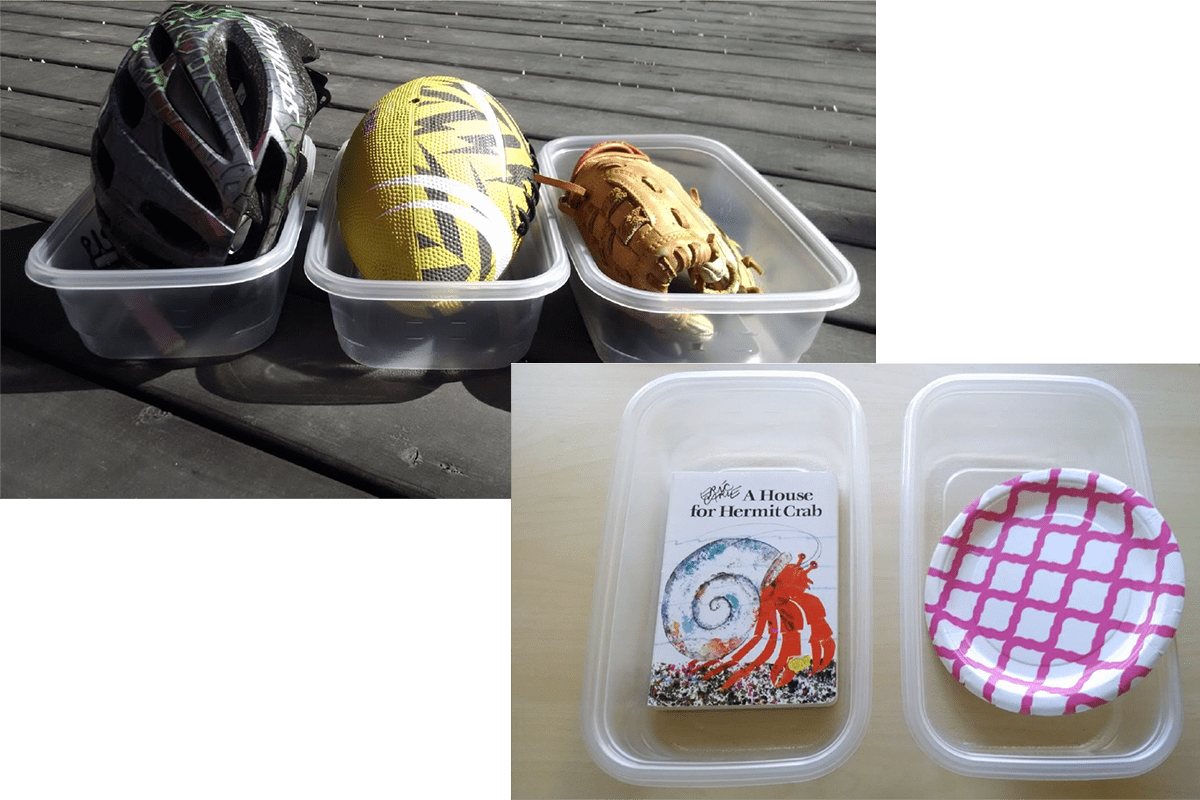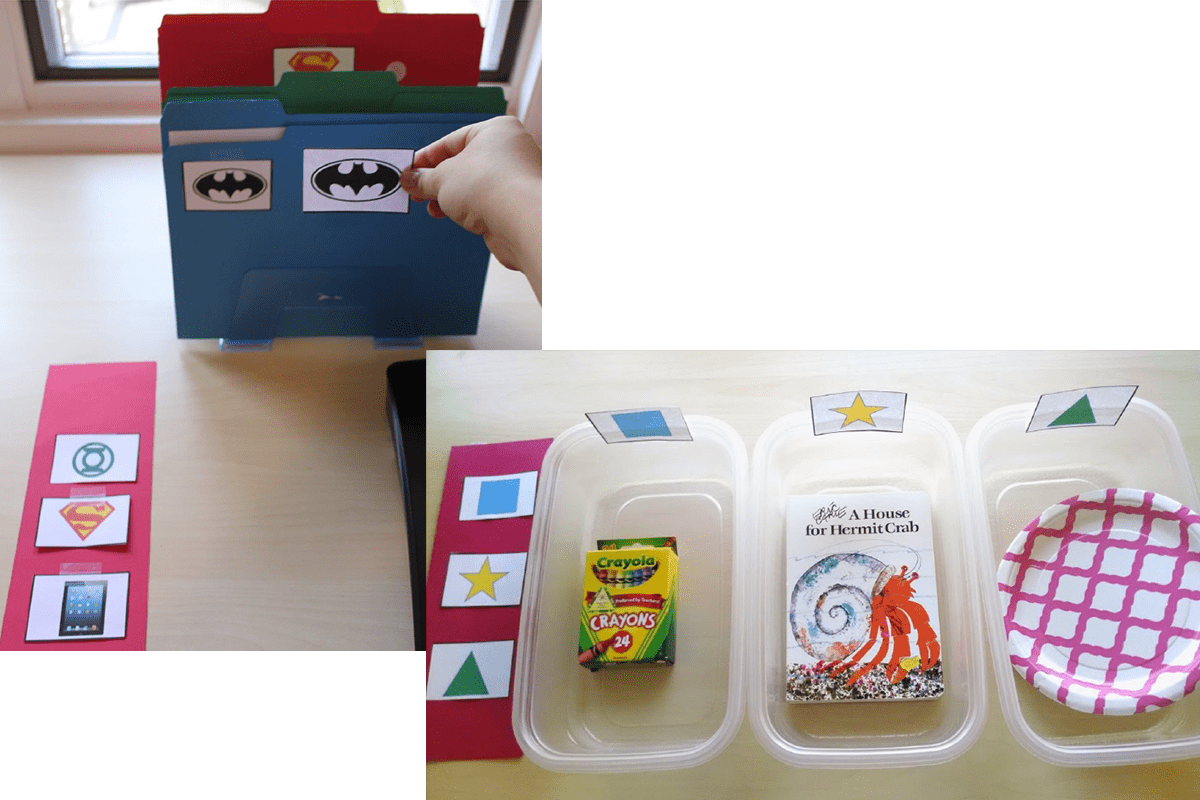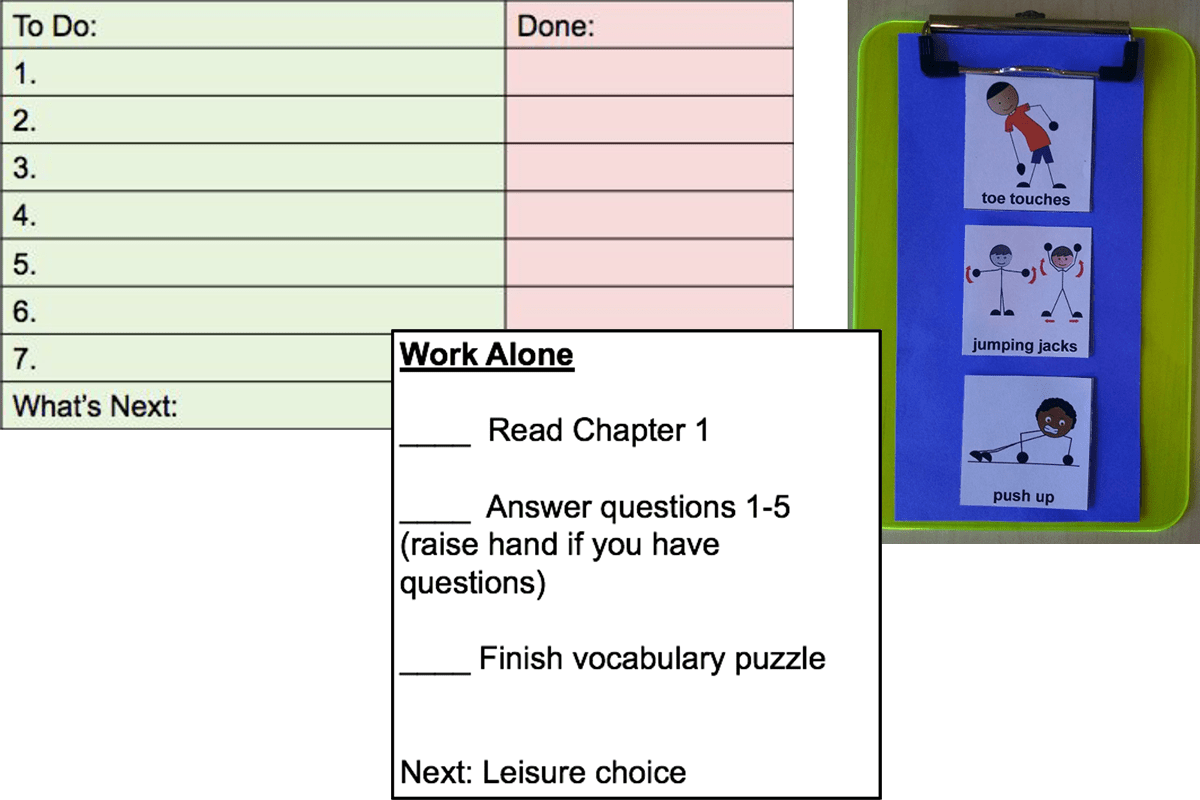As a teacher and autism consultant, I have found that additional visual supports beyond schedules, including organization systems and visual checklists, are among the most effective ways to help students succeed. In this article, I’ll explore the difference between schedules and organization systems, how those systems can address different learning challenges and how to decide which type of system to use. I’ll also share how you can incorporate them during this period of remote learning and how families can use systems at home as students transition into summer routines.
Visual schedules, organization systems and checklists—what’s the difference?
Many teachers may wonder what distinguishes a schedule from an organization system. The best way to differentiate the two is to think of visual schedules as allowing a learner to know where to go. For example, a schedule tells them it’s time to go to lunch, to go to their seat for work or to go to the carpet for circle time. Schedules are vital in letting students know where they are supposed to be at any given time during the day. However, for a learner with significant cognitive or communication needs, a question that follows finding out where to go is often, “What am I supposed to do once I get there?” This is where organization systems come in—they tell students what to do.
According to TEACCH Autism Program, organization systems help students answer four essential questions:
- What work or activities am I supposed to complete?
- How much work is expected of me?
- How can I tell that I am making progress?
- What do I do when I am finished?
Why are organization systems so important?
Think of each of the students you teach. Do any of these descriptions remind you of some of their challenges?
Difficulty processing verbal information (receptive communication)
Many students have challenges with receptive communication or with processing verbal information or directions. Visually showing them rather than telling them what to do allows them to process information in a more meaningful way.
Executive function and organization challenges
Some of our students have a difficult time following directions, attending to work and managing materials. When we use organization systems to clarify expectations, we help them better manage and navigate their assigned tasks.
Reliance on routines
For students who thrive on routines, organization systems allow them to better understand expectations, even when things don’t always go as planned. Organization systems allow students to know clearly how much work is expected and when they will be able to take a break if activities become challenging.
Challenging behaviors (expressive communication difficulties)
For many of our students with significant communication needs, undesired behaviors often occur when they don’t have a more appropriate way to express frustration or confusion. Utilizing organization systems is a great prevention tool because we present expectations in a way that is more easily accessible and understandable for our students.
What system should I use?
All students can benefit from organization systems. The system you choose, however, must fit the ability and level of understanding of each unique student. Organization systems can be simple and basic or detailed and complex. Here are a few types of systems to consider for your students’ needs.
Concrete or activity-based systems
For students who learn best with objects, systems should be simple and concrete. Objects or activities are organized on shelves or in bins. When a student completes an activity, the materials go into a nearby “finished” bin so that the learner knows they are making progress. Many of our most concrete students might complete just one or two activities before moving on to a preferred activity.

Matching systems (container or folder based)
Students who are able to match and understand pictures or symbols may use a higher-level system such as a container- or folder-based matching system. Students match symbols to a corresponding bin or folder and complete the work or task. That work can go either back into a bin or folder or into a “finished” basket before the student moves on to the next task or activity. It’s important to vary the number of activities or tasks during any given work session so that you teach your student flexibility. However, you do want to ensure that your expectations match the abilities of your student.

Picture or written checklists
When students are able to read or understand symbols or picture representations, it may be appropriate to give them a checklist. Checklists indicate and answer the four questions previously listed and allow a student to see clearly what is expected of them. Instead of moving actual work to a “finished” bin, however, they may simply check off completed work or put a card in a “finished” pocket.

When should I set up organization systems?
Organization systems are great ways to arrange work in your classroom, but they are equally important and provide meaning to activities at home and in the community. During remote learning and through the transition to summer, teachers can educate families about the power of using organization systems to organize school work, exercise, morning or bedtime routines, chores and even leisure skills. Students with significant needs are often confused by a lack of structure. Time at home without the routines of school can be exceptionally challenging. Adding organization systems can ease our students’ stress and anxiety and resulting behaviors.



